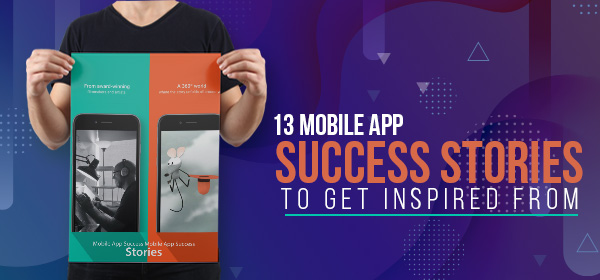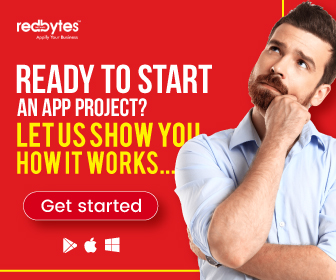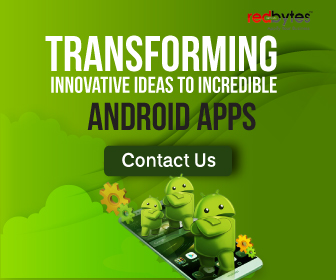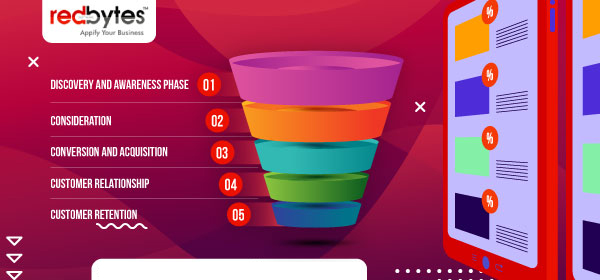In the world of mobile application development, to convert an idea into a functional mobile app means dedication, research and undying efforts to make it big. In the blooming industry of mobile apps, it is possible yet challenging to create a mobile app loved and celebrated by millions of users. For a start-ups, entrepreneur and fresh mobile app developers, there is a precious opportunity to transform a small concept into a successful app business.
However, you need to find strong inspiration for achieving goals.
To motivate you, we have summed up 13 mobile app success stories that will fuel your efforts with a solid inspiration:
1. Lisk
Lisk is perhaps today’s most inspiring mobile app success story that leverages latest Blockchain technology to address the emergence of cryptocurrency. The Co-Founder of Lisk.io was quite fascinated by the idea of working on this modern technology and started off the journey of creating an app merely at the age of 14.
Blockchain enables the encryption of the number of transactions to ensure they remain secure from fraud, theft or tampering. Due to high demand for Bitcon, Blockchain is most encouraged, and offers amazing flexibility to process safe transactions through a decentralized system.
Lisk has carved an inspiring success story, bringing Blockchain to the positive light and making it accessible to millions of users.
2. Instagram
Instagram achieved meteoric success and explosive fame soon after it was launched and became one of the sought-after mobile apps in recent years. Founded by Kevin Systrom and Mike Krieger, Instagram established as a brand with its unique features that allow users to express themselves through personal photos.
Surprisingly, it claimed more than 100K users in just a week of its release. The founders were conscious and thoughtful while working on feedback from users. Users adored its slick filters and stunning sharing capability. It is due to the skilled efforts of Mike and Kevin that Instagram became an instant success and was bought by Facebook for $1 billion two years later.
3. LIFT
Lift has truly turned out to be an uplifting app for those who seek daily dose of motivation and coaching. This free app has rich, genuine motivational qualities and support community that encourage you to near your goals by keeping you spirited and optimistic throughout the journey.
Users can enter the entire gamut of their goals and aspirations like workout and fitness, career dreams, meditation, writing and more. Just program the app with what you want to achieve and monitor your progress, set reminders and get notified after hitting your target. You can also meet like-minded users within the app. Lift is one of the biggest success stories to consider for great inspiration.
4. Snapchat
Large popularity of young smartphones users and the promise to deliver uncompromised security, speed and privacy became the substantial reason for Snapchat success. The glorious founders Evan Spiegel, Reggie Brown and Bobby Murphy started it as a college project initially with the name of Pickaboo – which was later changed to Snapchat.
The founders of the app received handsome funding over a period of developing the unique sharing features in the app and made a brand out of it.
5. WhatsApp
Founded by Brian Acton and Jan Koum while working on Yahoo, WhatsApp is the most used messaging app which is popular across the entire range of demographics (over a billion) especially because of its ease, speed and quick resort. WhatsApp also enabled people to keep the track of whether or not the message receiver has received and read the message.
People didn’t need to register to use it, which made it a chat messenger brand among mobile users. The app made $19 billion when Facebook took it over. The iPhone app also undoubtedly achieved raging success in shortest timeframe. Being the most successful message app on the planet, WhatsApp is the envious inspiration for today’s start-up enthusiasts.
6. Uber
Considered as the most electrifying app so far, Uber pioneered the way people book and make travel arrangements. It was created in 2008 by Travis Kalanick and Garrett Camp who developed the idea of building a strong mobile app when they needed assistance in finding a cab while exploring the city of Paris.
Today Uber is the most unrivalled taxi services used all over the world. It allows you to tap a button and get a cab without having to try hard to flag a taxi down. Most innovated with regular updates and advanced features, Uber now is equipped with extensive services like UberCHOPPER, UberEATS, and UberBOAT.
7. Slack
Founded in 2014, Slack now has more than 5 million users actively using the app for sharing messages with the people in their group. With net worth of $5 billion, Slack does claim the success story to be inspired from. Not only does it make for a great messaging app for casual usage, it also has potential enough to be leveraged as a robust means of keeping co-employees and project teams updated and connected through creating individual channels.
Because of its popularity, Slack was featured as one of the popular and widely used messaging app by Inc, New York Times, The Verge and Times. This makes Slack, an app to be idealized by start-up entrepreneurs who wish to imitate similar success in 2018.
8. Prisma
Prisma was one of the most exciting photo editing apps in 2016 that had many photo-fanatic users thrilled and delighted. It was used best for its incredible features that made editing a fun and enjoyable activity.
It enables users to try various unique filters that resemble the art and creativity of famous artists. The specific feature of the app is that t does not take much of time but in turn produces great results from editing efforts.
9. Appbot
Appbot is another success story that deserves a spot in our list. It helped developers gain more downloads and positive reviews more efficiently. The app reviews aggregated from different online forums are sent where they can create a great influence for development team.
The app also does the job of integrating the useful data needed to display requests and bug reports. This app was downloaded many a time, being the original app concept that has achieved tremendous success.
10. Virtru
Virtru shares another mobile app success story by being the most popular among users who desired maximum privacy. Will and John Ackerly started it in 2012 and landed on Fortune 2015 list of ’40 under 40.’
Virtru is committed to providing encryption-rich security to your emails and essential data once you attach it as an add-on to emails. The app allows users to pause message forwarding even after being read.
Stunning and successful, the app has incredible features that serve businesses right.
11. Streaks
Streaks app success is greatly defined by its unique approach to give users amazing ability to master the skills through daily practice. For people who are willing to follow their goals with constant progress and monitoring, Streaks come handy.
Mark your goals in its calendar and track days of practice with visible X for each day completed. It will also guide you for steps required to attain a specific goal and help you keep an eye on everything.
12. UC Browser
It goes without a surprise that UC Browser is a dominant name when it comes to the world of mobile browsing. Being the second largest mobile browser in the world, it is especially popular in Asia used widely by more than 400 million users in 2016.
Through years of strenuous efforts and experimentation, UC Browser boasts competition with Twitter and Instagram with such colossal success. It is owned by Chinese company UC web, a part of Alibaba Group.
13. Quotes
The Quote app has recently become famous among people who want to share their own expressions by developing their own original quotes. The app also mentors you on how to be better in Quotes business by delivering a pop-up message of advice on daily basis that includes most creative minds of classic times and today’s business and motivation leaders.
Used by millions of people by now, Quotes is the best app when you need to kick-start your engine of creativity, bearing the top 13 most inspiring apps in 2022.
Conclusion
The mobile app success stories described above are all attributed to 100% life-changing dedication and hardcore creativity. When two or more people come together to help transform the human lifestyle, the result is greatest, memorable success story that people often talk or write about. Hopefully, these apps will inspire you work on an app idea in future.



































